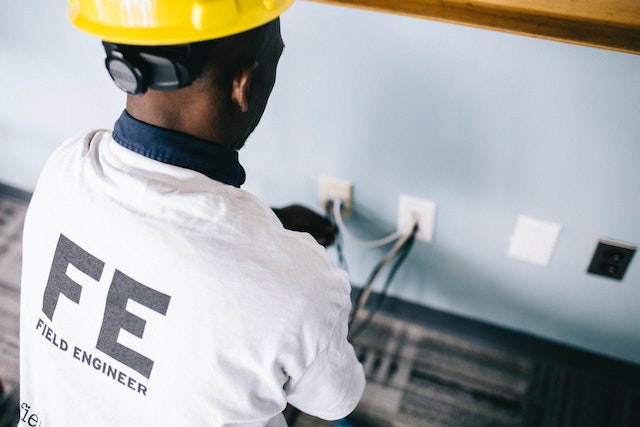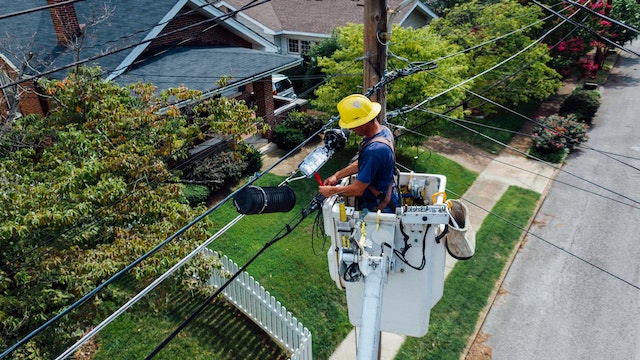What are the different types of trade schools one could enroll in? As there is a tradesman shortage in the United States, we present various vocational programs that may be of interest to you.
Trade schools, also known as vocational schools or technical schools, are educational institutions that provide hands-on training in specific trades or occupations.
In this article, we’ll take a closer look at the various types of trade schools in the USA, what trade schools are really all about, admission requirements, duration of trade school study, and the difference between trade schools and colleges.
What Are Trade Schools?
Technical and trade schools are educational establishments that offer practical instruction in certain trades or careers. These institutions provide courses in a variety of subjects, including technology, nursing, and skilled crafts like plumbing and welding.
With the goal of giving students the skills they need to enter the workforce in their chosen field, different types of trade schools offer practical options to students looking to start a career in a skilled trade or occupation.
We have written about different trade schools in California from top cities in the state. You should check it out.

Trade School Requirements in USA – Steps to Apply
The requirements for trade schools in the USA can vary depending on the school and program. However, there are some general requirements that most trade schools share:
- High School Diploma or Equivalent
Most trade schools require that applicants have a high school diploma or equivalent, such as a GED. This is because trade school programs require a certain level of academic proficiency in order to successfully complete the coursework.
- Age Requirements
Most trade schools require that applicants be at least 18 years old, or have parental consent if they are under 18. However, there are some programs that may accept students who are younger than 18, depending on the program and state regulations.
- English Language Proficiency
Since most trade school programs are taught in English, various types of trade schools may require that applicants demonstrate proficiency in the language. This can be done through standardized tests such as the TOEFL or IELTS, or through other means such as coursework or previous educational experience in an English-speaking environment.
- Application and Admissions Process
Trade schools typically require applicants to complete an application and provide transcripts, test scores, and other supporting documents. Some schools may also require an interview or entrance exam as part of the admissions process.
- Program-Specific Requirements
In addition to the general requirements, trade schools may also have program-specific requirements. For example, a cosmetology program may require applicants to have a certain level of experience in the beauty industry, or an HVAC program may require applicants to have a certain level of math proficiency.
Overall, the requirements for trade schools in the USA are generally less strict than those for traditional four-year colleges and universities.
How Long Is Trade School Study?
The duration of various types of trade schools programs can vary depending on the specific program and institution. However, most trade school programs can be completed in as little as six months to two years. This is significantly shorter than the average four-year bachelor’s degree program at a traditional college or university.

The Difference Between Trade Schools and Colleges
Here are some key differences between trade schools and colleges, presented in tabular form:
| Aspect | Trade Schools | Colleges |
|---|---|---|
| Purpose | To provide hands-on training in specific trades or occupations | To provide a broad-based education in a variety of academic fields |
| Program Length | Typically 6 months to 2 years | Typically 4 years or more |
| Curriculum | Focuses on practical, job-specific skills and knowledge | Includes a mix of general education and major-specific courses |
| Class Size | Usually smaller, with more individualized attention | Typically larger, with less individualized attention |
| Cost | Lower tuition and fees compared to colleges | Higher tuition and fees compared to trade schools |
| Admissions Requirements | High school diploma or equivalent, with some programs requiring work experience | High school diploma or equivalent, with most programs requiring SAT or ACT scores |
| Career Preparation | Prepares students for immediate entry into the workforce in a specific trade or occupation | Provides a foundation for a wide range of careers, including those outside of a student’s major |
No doubt, one of the attractive factors why many prefer trade schools is its affordability. The average cost of a college degree is $9.410 per year, whereas the cost of a full trade school education ranges from $5.000 to $15.000.
Overall, trade schools and colleges serve different purposes and offer different types of education. Trade schools provide more focused, job-specific training, while colleges provide a broad-based education with a wider range of career opportunities. The decision of whether to attend a trade school or college ultimately depends on a student’s career goals and interests.
The 15 Different Types of Trade Schools In USA
Beauty Trade Schools
Beauty trade schools, also known as cosmetology schools, offer students the opportunity to become licensed professionals in the beauty industry. These schools offer programs in hair, skin, and nail care, and provide hands-on training to help students develop the skills they need to succeed in their chosen field. Students in beauty trade schools learn how to style hair, apply makeup, perform facials, provide manicures and pedicures, and much more.
These types of trade schools typically offer programs that range from six months to two years in length, depending on the specific program and the state requirements for licensure. Upon completion of their program, students take a licensing exam to become a licensed cosmetologist, esthetician, or nail technician.
Beauty trade schools can be found all over the United States, and offer a range of programs that cater to different areas of the beauty industry. For example, students may choose to specialize in hair styling, makeup artistry, or skincare, among others.
Also Read: List of University of Phoenix Online Degrees and Courses
Computer and IT Trade Schools
Computer and IT trade schools provide students with the skills they need to succeed in the rapidly evolving field of technology. These schools offer programs in areas such as computer programming, software development, network administration, and cybersecurity, among others.
Computer and IT trade schools provide hands-on training in the latest technologies and programming languages, and prepare students for industry certifications that can help them stand out to employers. Students in these programs learn how to develop software applications, maintain computer networks, analyze data, and much more.
Computer and IT trade schools offer a range of programs that vary in length and focus. Some programs may be completed in as little as six months, while others may take up to two years. Programs may also be tailored to specific areas of the industry, such as web development or cybersecurity.
CDL Truck Driving Schools
One of the most popular types of trade schools is the CDL truck driving schools, which provide students with the skills they need to become commercial truck drivers. These schools offer programs that teach students how to operate and maintain commercial vehicles, as well as safety regulations and driving techniques.
CDL truck driving schools typically offer programs that range from three to six weeks in length, depending on the state requirements for licensure. Upon completion of their program, students take a licensing exam to become a licensed commercial truck driver.
CDL truck driving schools can be found all over the United States, and offer a range of programs that cater to different types of commercial driving. For example, some programs may focus on long-haul trucking, while others may focus on local delivery.

Massage Therapy Schools
Massage therapy schools provide students with the skills they need to become licensed massage therapists. These schools offer programs that teach students how to perform therapeutic massage techniques, as well as anatomy and physiology, pathology, and business management.
Massage therapy schools can be found all over the United States, and offer a range of programs that cater to different types of massage therapy. For example, some programs may focus on sports massage or medical massage, while others may focus on relaxation massage or spa treatments.
Also Read: Top MBA Colleges in USA
Carpentry Trade Schools
One of the most common types of trade schools in USA is the Carpentry trade schools. They offer training in the carpentry trade, which involves the construction, installation, and repair of wooden structures and fixtures.
Carpentry programs typically cover topics such as safety, hand and power tool usage, blueprint reading, framing, and finishing techniques. Graduates of carpentry trade schools can pursue careers as carpenters, cabinetmakers, or woodworkers.
One example of a carpentry trade school is the North Bennet Street School in Boston, Massachusetts. The school offers a two-year program in carpentry and joinery, which teaches students how to create and repair wooden structures and furniture. Students learn both traditional and modern techniques, and have the opportunity to work on real-world projects in the school’s workshops.
Another example is the Heartland Carpenters Training Center in St. Louis, Missouri. This school offers a four-year apprenticeship program in carpentry, which combines classroom instruction with hands-on training. Students learn skills such as framing, roofing, and finishing, and have the opportunity to earn a journeyman carpenter credential upon completion of the program.
Plumbing Trade Schools
On the list of types of trade schools with a higher earning possibility is Plumbing trade schools. These schools offer training in the plumbing trade, which involves the installation, repair, and maintenance of pipes and fixtures that carry water and waste. Plumbing programs typically cover topics such as safety, piping systems, plumbing codes, and plumbing fixture installation. Graduates of plumbing trade schools can pursue careers as plumbers, pipefitters, or steamfitters.
One example of a plumbing trade school is the Associated Builders and Contractors Plumbing Apprenticeship Training Program in San Diego, California. This school offers a four-year apprenticeship program in plumbing, which combines classroom instruction with hands-on training. Students learn skills such as welding, brazing, and soldering, and have the opportunity to earn a journeyman plumber credential upon completion of the program.
Another example is the Tulsa Welding School & Technology Center in Tulsa, Oklahoma. This school offers a program in plumbing, which includes classroom instruction, hands-on training, and an apprenticeship. Students learn skills such as plumbing fixture installation, water and waste piping, and plumbing codes and regulations.
Electrician Trade Schools
Electrician trade schools offer training in the electrician trade, which involves the installation, maintenance, and repair of electrical systems. Electrician programs typically cover topics such as safety, electrical theory, wiring techniques, and blueprint reading. Graduates of electrician trade schools can pursue careers as electricians, electrical technicians, or electrical contractors.

One example of an electrician trade school is the Lincoln Technical Institute in Mahwah, New Jersey. This school offers a program in electrical and electronics technology, which includes classroom instruction and hands-on training. Students learn skills such as electrical theory, electrical code, and electrical system installation.
Another example is the Associated Builders and Contractors Electrical Apprenticeship Training Program in Southern California. This school offers a four-year apprenticeship program in electrical work, which combines classroom instruction with hands-on training. Students learn skills such as wiring techniques, circuit analysis, and blueprint reading, and have the opportunity to earn a journeyman electrician credential upon completion of the program.
Welding Trade Schools
Welding is a skilled trade that involves the use of heat and pressure to join metals together. Welders work in a variety of industries, including manufacturing, construction, and transportation. Welding trade schools provide students with the skills they need to become welders, fabricators, and welding inspectors.
Welding trade school programs typically take between six months and two years to complete, and include both classroom instruction and hands-on training. Students learn the basics of welding, including safety procedures, welding techniques, and how to read blueprints. They also learn about welding equipment and tools, and how to maintain and repair them.
According to the Bureau of Labor Statistics, employment of welders, cutters, solderers, and brazers is projected to grow 2% from 2021 to 2030. This is due in part to the aging infrastructure in the United States, which will require repairs and maintenance.
Dental Hygienist Trade Schools
Another one on the list of types of trade schools are the Dental Hygienist schools Dental hygienists are licensed healthcare professionals who clean teeth, examine patients for signs of oral diseases, and educate patients on proper oral hygiene. Dental hygienist trade schools provide students with the skills they need to become licensed dental hygienists.
Dental hygienist programs typically take two years to complete, and include both classroom instruction and hands-on training. Students learn about dental anatomy, patient care, radiography, and periodontal therapy. They also learn about patient communication and education, and how to work with dentists and other healthcare professionals.
According to the Bureau of Labor Statistics, employment of dental hygienists is projected to grow 6% from 2020 to 2030. This is due in part to an aging population that is more likely to need dental services.
Chef/Cook/Culinary Trade Schools
Culinary trade schools provide students with the skills they need to become chefs, cooks, and other culinary professionals. These schools offer programs in a variety of culinary fields, including baking and pastry arts, culinary arts, and hospitality management.
Culinary programs typically take between six months and two years to complete, and include both classroom instruction and hands-on training. Students learn about food preparation and safety, kitchen management, nutrition, and culinary arts. They also learn about the business side of the culinary industry, including marketing, finance, and entrepreneurship.
According to the National Restaurant Association, the restaurant industry is projected to add 1.6 million jobs in the United States between 2020 and 2030. This growth is expected to create a demand for culinary professionals, including chefs and cooks.
Paralegal and Legal Assistant Trade Schools
One of the major types of trade schools in USA is the Paralegal and legal assistant trade schools
Graduates of these schools are professionals who assist lawyers with legal research, drafting documents, and other tasks. Paralegal and legal assistant trade schools provide students with the skills they need to become paralegals and legal assistants.
Students of Paralegal and Legal Assistant trade schools learn about legal research and writing, civil litigation, criminal law, and ethics. They also learn about technology used in the legal industry, including case management software and legal research databases.
Emergency Services Schools
Emergency services schools offer education and training in a range of fields related to emergency medical services (EMS), firefighting, and law enforcement. These schools train students to handle emergencies and work in high-pressure situations. Examples of programs that are offered at emergency services schools include:
- Emergency Medical Services (EMS) Training: This program prepares students to work as paramedics or emergency medical technicians (EMTs). Students learn to provide life-saving medical care to patients in emergency situations.
- Fire Science: This program prepares students for careers in firefighting. Students learn about fire prevention and safety, firefighting techniques, and rescue operations.
- Criminal Justice: This program prepares students for careers in law enforcement. Students learn about criminal law, police procedures, and investigation techniques.
Some examples of emergency services schools in the USA include the National Emergency Training Center in Emmitsburg, Maryland, which offers training for firefighters and emergency responders, and the International Association of Fire Fighters’ (IAFF) Online Learning Center, which offers courses on various aspects of firefighting and EMS.
Aircraft and Avionics Equipment Mechanics and Technicians
You can’t talk about the different types of trade schools without mentioning the Aircraft and avionics equipment mechanics and technicians Schoools.
These schools are responsible for repairing and maintaining aircraft and aviation equipment. These professionals play a critical role in ensuring the safety and functionality of airplanes and other aircraft. Trade schools that offer programs in this field prepare students for careers as aircraft and avionics mechanics and technicians.
Examples of programs that are offered at aircraft and avionics equipment mechanics and technicians schools include:
- Aircraft Maintenance Technology: This program prepares students to work as aircraft mechanics. Students learn about the various components of an aircraft, as well as maintenance and repair techniques.
- Avionics Technology: This program prepares students to work as avionics technicians. Students learn about the electronic systems that are used in aircraft, as well as maintenance and repair techniques.
Some examples of aircraft and avionics equipment mechanics and technicians schools in the USA include Spartan College of Aeronautics and Technology in Tulsa, Oklahoma, which offers programs in aircraft maintenance technology, and the National Aviation Academy in Clearwater, Florida, which offers programs in avionics technology.
Also Read: Top 15 Online Trade Schools In California
Radiation Therapists
Radiation therapists work in the healthcare field, providing treatment to patients with cancer and other diseases using radiation therapy. Trade schools that offer programs in this field prepare students for careers as radiation therapists.
Examples of programs that are offered at radiation therapist schools include:
- Radiation Therapy Technology: This program prepares students to work as radiation therapists. Students learn about the use of radiation therapy to treat cancer and other diseases, as well as the equipment and procedures used in this field.
Some examples of radiation therapist schools in the USA include the American College of Radiation Oncology in Los Angeles, California, and the University of Texas MD Anderson Cancer Center in Houston, Texas.
Summary – Types of Trade Schools
In conclusion, different trade schools offer a practical and cost-effective alternative to traditional four-year colleges and universities. Students who are interested in pursuing a career in emergency services, aircraft and avionics equipment mechanics and technicians, and radiation therapy can benefit from the specialized education and training that is offered at trade schools in these fields.
With a focus on hands-on learning and career preparation, trade schools can provide students with the skills they need to succeed in their chosen profession.
Prospective students should research the requirements for the specific program they are interested in, and contact the school’s admissions office if they have any questions or concerns.





